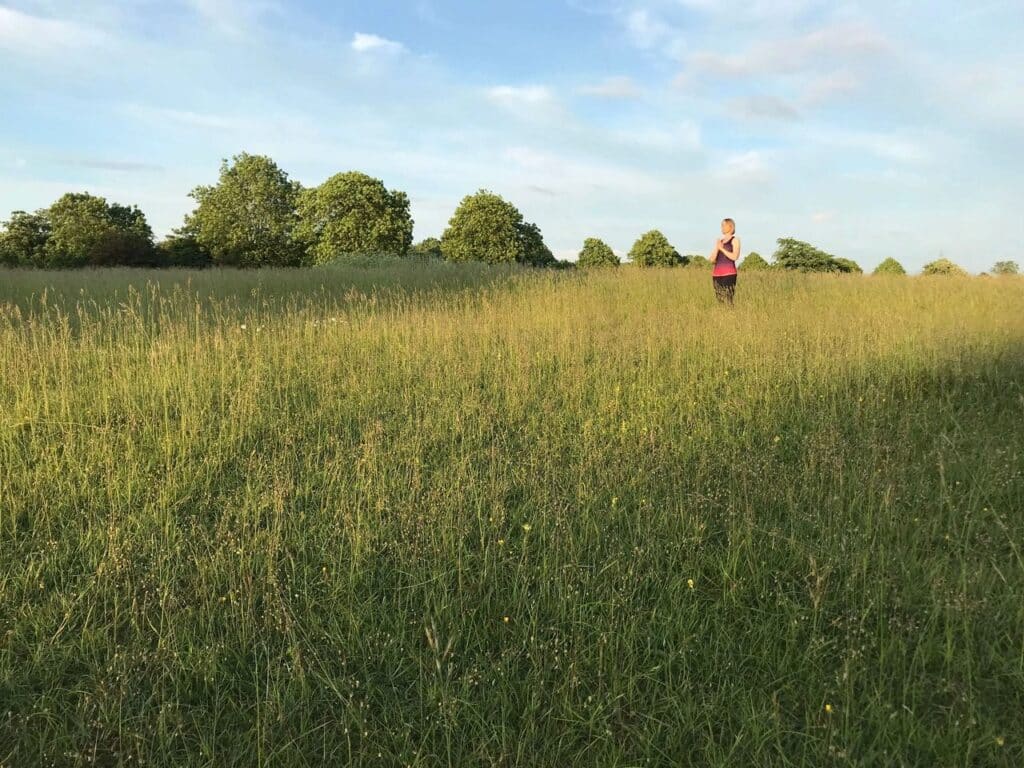As I wobbled around in Vrksasana (tree pose) in my yoga practice the other day I reflected on how importance balance is in our lives, and how easy it is to get out of kilter, both on and off the mat. Work-life balance, emotional balance, nutritional balance: All these things are finely tuned and it doesn’t take much to upset things. At which point I became distracted and lost my balance!
There is something frustrating about losing our balance in one-legged poses. We won’t fall and hurt ourselves as we can just put our elevated foot down to steady ourselves, but when we lose our balance we feel out of control – and the ego hates to lose control.
But good balance is more than being able to perform a yoga pose. It is what enables us to go about our daily lives. Standing, walking, climbing stairs, getting up out of a chair, let alone something as complicated as a yoga pose – all these require physical balance.
Factors contributing to balance
Vision
Sight enables you to perceive direction and motion. This is one reason why a yoga teacher will often advise students to look at a fixed point when attempting a balance pose – and why they are all much harder with your eyes shut!
Somatosensory system
The nerves in our muscles and connective tissues relay information about our position in the surroundings.
Vestibular system
The vestibular system monitors motion, equilibrium and spatial orientation and can be the cause of dizziness if not working properly.
Muscle strength
You need muscular strength in the feet, ankles, legs and core to hold yourself upright and reposition as needed, whether stationary or in motion.
Balance as we age
Balance is yet another one of our physical attributes that declines with age. As the things that contribute to good balance deteriorate – our muscular strength, flexibility, eyesight and vestibular system – our balance suffers too. The good news is that you can work on maintaining and even improving your balance and that yoga balances can provide the perfect opportunity to do so.
Tips on improving balance
Feet
Start from the ground up and think about your feet. You can even do this in Tadasana (mountain pose) and practise moving your centre of gravity forward or back, to the left or to the right, all the while being mindful of the effect these movements have on your feet. Spread your toes and create a broader base in preparation for a balance. If you are practising a balance using your hands or arms, try and imagine rooting those into the ground.
Centre of gravity
As soon as you begin to lift a leg or move your body one way, your centre of gravity shifts. If you are aiming to lift your arms as well as your legs then the higher your centre of gravity becomes, the harder it is to balance. If you have trouble with this start with your legs and arms low and down by your sides or out like a tightrope walker to stabilise yourself.
Gaze
Keep you gaze fixed gently on a stationary point not too far ahead. In yoga, this is called your Drishti, commonly translated as “view”, “gaze” or “point of focus”.
Moving
Move into your balance slowly and mindfully; abrupt movements will destabilise you. If you are practising tree pose, try to embody a tree. Rooted and secure at the base, but fluid, alive and being able to move with the wind above. Try and move back out of the balance as slowly and mindfully as you went into it – this is much harder!
Breath
Closely observe the breath. Keeping your breath calm and steady will stabilise your mind and your focus (Drishti).
Head position
Pay attention to the position and movement of the head. Not only is it a useful counterbalance but it is also home to the vestibular system in the inner ear. Turning yourself upside down (inverted postures) is a great way to stimulate the vestibular system.
Props
When needed, use a hand, a wall, a block or even another human being as support or to gain stability. We should all allow ourselves to lean on another trusted being in time of need.
Be playful
Balances are fun. Don’t worry about losing your balance, because you will. And then what will happen? Nothing! And what does it matter? It doesn’t. It’s all good.
Finding your balance
Being in balance is finding a state of equilibrium, both physically and mentally. And it’s unique to you. It’s inevitable that the wobbles will come, but practising your balance in yoga helps your body become stronger and more adaptable. Use it or lose it as they say!
Other types of balance in life might take more work, but perhaps the answer is the same: the more you practise mindfully, the less you wobble. So we all know what the answer is here. Yes – be more tree!


